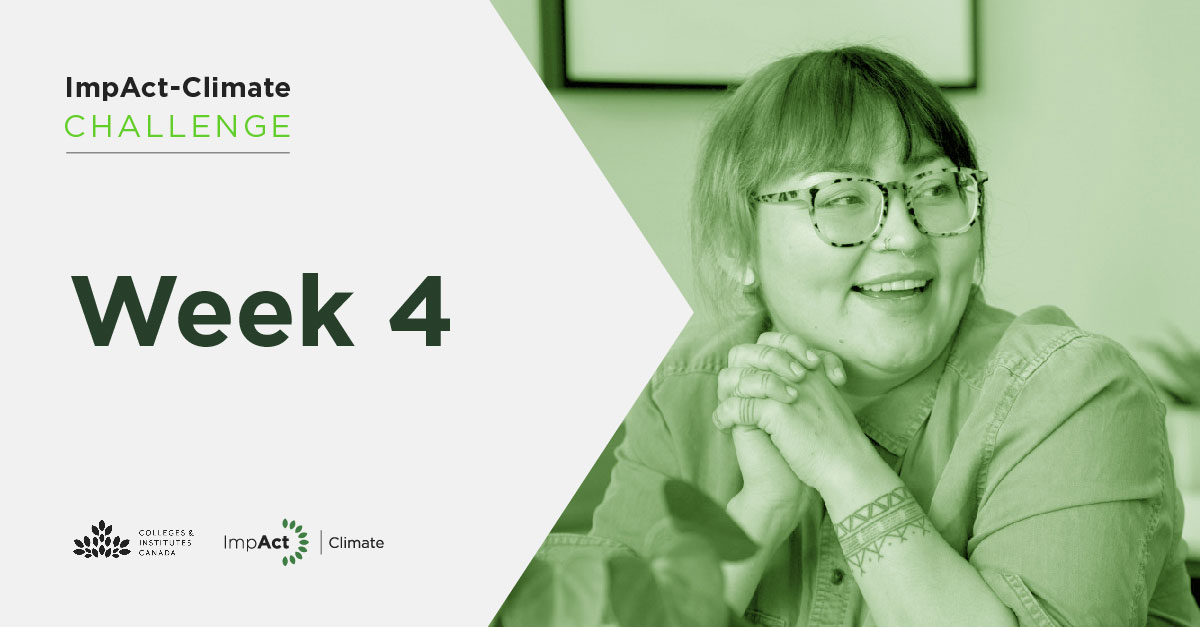As we enter the fourth week of the challenge, our focus shifts to Indigenous-led conservation and stewardship, exploring how holistic approaches offer invaluable lessons in preserving biodiversity, ecosystem equilibrium, and forging a more sustainable future.
What is Indigenous-Led Conservation and Stewardship?
Indigenous-led conservation and stewardship refers to environmental practices and initiatives guided by Indigenous knowledge, values, and traditional ecological wisdom. It encompasses the holistic relationship between Indigenous communities and their ancestral lands, emphasizing sustainable resource management, preservation of biodiversity, and the protection of cultural heritage.
With more than 70% of Canada’s Indigenous Peoples residing in the boreal region, their stewardship contributes significantly to preserving over 25% of the world’s intact wetlands, storing carbon, supporting wildlife, and maintaining vital ecosystems.
Indigenous communities are leading the way in Canada’s shift from fossil fuels to renewable energy, making up the largest change agents for clean energy. Indigenous communities are so heavily involved in clean energy that they now own, co-own, or have a defined financial benefit agreement in place for almost 20% of Canada’s electricity generating infrastructure.
How is it Different?
Unlike conventional conservation approaches, which typically focus on scientific methods and preservation with less emphasis on the human-nature relationship, Indigenous-led conservation integrates spiritual, cultural, and ecological considerations. It recognizes the interconnectedness of all living beings and advocates for harmony between humans and the natural world. This approach prioritizes long-term sustainability over short-term gains, often resulting in more resilient ecosystems.
You can learn more about how Thaidene Nëné in the Northwest Territories exemplifies the sustainable balance achievable through Indigenous-led conservation.
Did You Know? Indigenous stewardship is a powerful force for conservation, safeguarding biodiversity in Canada. On average, Indigenous-managed lands nurture an incredible 190 unique species of amphibians, mammals, reptiles, and birds. Compare that to non-protected lands, where this number drops to 126 species.
While Indigenous people only make up 5% of the global population, they steward 20% of the planet and protect more than 80% of global biodiversity.
Indigenous communities and their shared wisdom are recognized by the United Nations Framework Convention on Climate Change as vital to global climate action.
Taking Action: Embracing Indigenous-Led Conservation
Students, staff, and faculty at Canadian colleges and institutes can learn from and embrace Indigenous-led conservation and meet UN Sustainable Development Goals beyond SDG 13 (climate action) through the following:
- Learning from Indigenous Knowledge: Initiate mutually beneficial and respectful partnerships with local Indigenous communities and knowledge holders, prioritizing Indigenous voices and rights, to seek guidance and learn about traditional land management practices. (Goals: 4, 10, 11, 16, and 17)
- Incorporating Traditional Practices: Support and make space for incorporating Indigenous techniques, such as controlled burns and landscape management techniques which help enhance biodiversity and mitigate risks (like wildfires). This could be through inclusion in curriculum and college programs or simply by being an ally to these practices. Teaching respect for traditional Indigenous practices should be included in all curriculum and programming. (Goals: 4, 9, 10, 11, 14, 15, and 16)
- Cultural Exchange and Workshops: Organize workshops, seminars, and cultural exchange programs where students, staff, and faculty can engage directly in an equitable and respectful way with Indigenous knowledge holders and learn about sustainable land stewardship. (Goals: 4, 10, 11, 16, and 17)
- Field Trips and On-Site Learning: Plan field trips to Indigenous-managed lands to observe firsthand the successful integration of traditional practices and modern conservation strategies. (Goals: 4, 11, 14, and 15)
- Respect Indigenous Sovereignty and Understand Treaties: Promote the recognition and honouring of Indigenous rights to govern their ancestral lands, supporting and advocating ongoing decolonization efforts. (Goals: 1, 2, 3, 4, 6, 7, 8, 9, 10, 11, 14, 15, and 16)
- Support Indigenous-Led Initiatives: Collaborate on projects initiated by Indigenous communities, providing resources and support to their conservation efforts. Understanding the treaties that cover our lands is crucial, as these agreements are the foundations for how we share and coexist on the land. (Goals: 7, 8, 9, 10, 11, 14, 15, and 17)
- Public Awareness Initiatives: Participate in public awareness campaigns and initiatives that foster a deeper understanding of Indigenous cultures, social justice, and their vital role in biodiversity conservation. (Goals: 10, 16, and 17)
By actively participating in these strategies, the college community can contribute to the preservation of biodiversity while respecting Indigenous wisdom and fostering a more sustainable and inclusive future.

Deepen your knowledge and commitment to reconciliation.
Explore and learn from the 94 Truth and Reconciliation Calls to Action, a foundational document for understanding and addressing the historical and ongoing injustices faced by Indigenous Peoples in Canada.
Get inspired – Indigenous wisdom in sustainability on our campuses
Canadore College’s ImpAct-Climate Campus Living Labs Demonstration Project explored solar-powered hydroponic grow pods as a means to providing a sustainable approach to feeding northern Indigenous communities. Even in winter, these self-contained, photo-voltaic units provide the right environment to grow an abundance of healthy, locally accessible food while relying only on renewable energy and using 10 times less water than conventional agriculture.
Enter the Challenge to Win!
Commit to the challenge for your chance to win $350. Complete all six weekly challenges to enter the draw for $1,000.
Land Acknowledgment and Learning Challenge
Your Challenge: This week, understand the history of the land you’re on and discover which Indigenous communities traditionally inhabited and cared for it.
Use the online tool Whose Land to get started.
Learn about the treaty territory you’re situated in, treaty rights, and the treaty relationship.
Reflect on how this new knowledge changes the way you think about the land and conservation, your role in reconciliation, and how you can forge a deeper connection with the land, nature, and local wildlife in a respectful way. Consider the ways in which you can support and respect Indigenous communities and Indigenous-led conservation efforts in your daily actions. Ask yourself, “How can I actively contribute to honouring the land and its original caretakers, and engage with my environment in a way that promotes sustainability and respect for Indigenous traditions and rights?”

